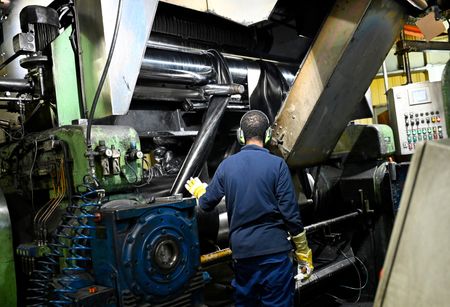BEIJING (Reuters) -China on Friday unveiled a proposal for a more stringent steel capacity swap plan to reduce existing capacity and rebalance supply and demand, 14 months after it paused the old programme.
The original swap plan required steel mills to remove at least an equal amount of older existing steelmaking capacity when they add new capacity as a way to curb oversupply.
But China, which produces more than half the world’s steel, halted the steel capacity replacement programme from August 23, 2024 as it failed to rein in rampant expansion, leaving the industry with overcapacity that hit profitability.
China’s steel industry has taken a hit from faltering domestic demand from 2022 due to a prolonged property market crisis.
The supply-demand mismatch has eroded steel margins, spurring record exports of steel products from China and a protectionist backlash from countries flooded with Chinese steel.
Under the new swap plan, the addition of new steel capacity in key areas, the transfer of steel capacity from non-key areas to key areas and the capacity transfer among key areas are strictly forbidden, China’s Ministry of Industry and Information Technology said in a statement.
Key areas refer to the Beijing-Tianjin-Hebei and surrounding areas, the Yangtze River Delta region, and the Fenwei Plain, the statement said.
Provinces and cities with clear targets for total steel capacity are not allowed to accept the transfer of capacity from other regions, it said.
At least 1.5 metric tons of old steel capacity is needed to exit for building every ton of new capacity.
The plan seeks to encourage more efficient utilisation of scrap steel to develop cleaner electric-arc-furnace-based steelmaking in an organised way, it said.
“The plan may be more stringent than the last one but it does not do what the industry needs,” said Tomas Gutierrez, head of data at consultancy Kallanish Commodities.
“Recently commissioned capacity will run for decades. Old capacity will struggle on unless it is really on its last legs. None of this suggests that capacity will be actively managed in a sustained period of declining demand.”
(Reporting by Amy Lv, Ethan Wang and Colleen Howe, Editing by Louise Heavens and Jane Merriman)










